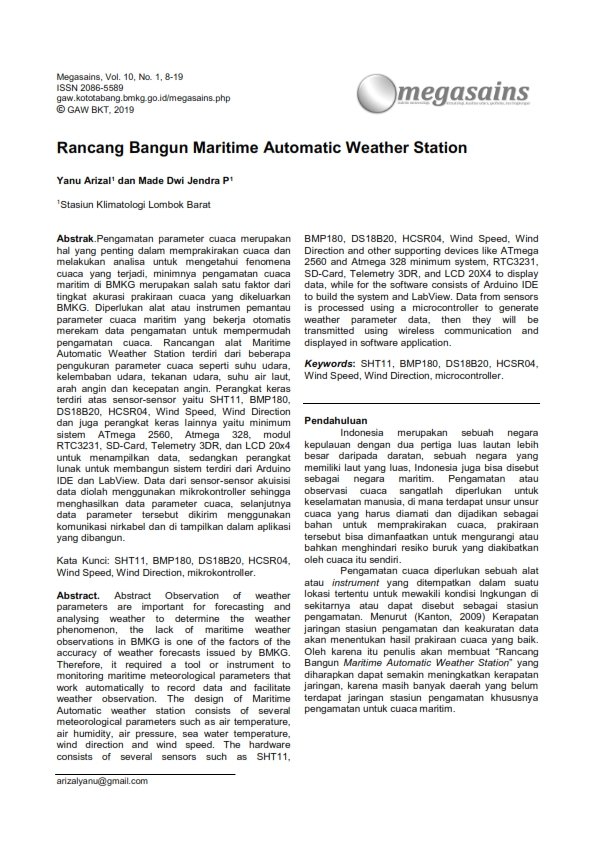Design and Build a Maritime Automatic Weather Station
Main Article Content
Abstract
Abstract Observation of weather parameters are important for forecasting and analysing weather to determine the weather phenomenon, the lack of maritime weather observations in BMKG is one of the factors of the accuracy of weather forecasts issued by BMKG. Therefore, it required a tool or instrument to monitoring maritime meteorological parameters that work automatically to record data and facilitate weather observation. The design of Maritime Automatic weather station consists of several meteorological parameters such as air temperature, air humidity, air pressure, sea water temperature, wind direction and wind speed. The hardware consists of several sensors such as SHT11, BMP180, DS18B20, HCSR04, Wind Speed, Wind Direction and other supporting devices like ATmega 2560 and Atmega 328 minimum system, RTC3231, SD-Card, Telemetry 3DR, and LCD 20X4 to display data, while for the software consists of Arduino IDE to build the system and LabView. Data from sensors is processed using a microcontroller to generate weather parameter data, then they will be transmitted using wireless communication and displayed in software application
Article Details

This work is licensed under a Creative Commons Attribution-NonCommercial 4.0 International License.
The author is willing to retain the copyright and grant journal rights to the first publication with works that are simultaneously under license the Creative Commons Attribution-NonCommercial-NoDerivatives 4.0 International. It allowing the others to share the work with recognition of the author's work and the initial publication in this journal.
Authors can enter into separate additional contractual arrangements for the non-exclusive distribution of published versions of journal works (for example, posting them to institutional repositories or publishing them in a book), with recognition of the initial publications in this journal.
Authors are permitted and encouraged to send their work online (for example, in their institutional repositories or websites) before and during the submission process because it can lead to productive exchanges, as well as previous and larger citations of published works.

